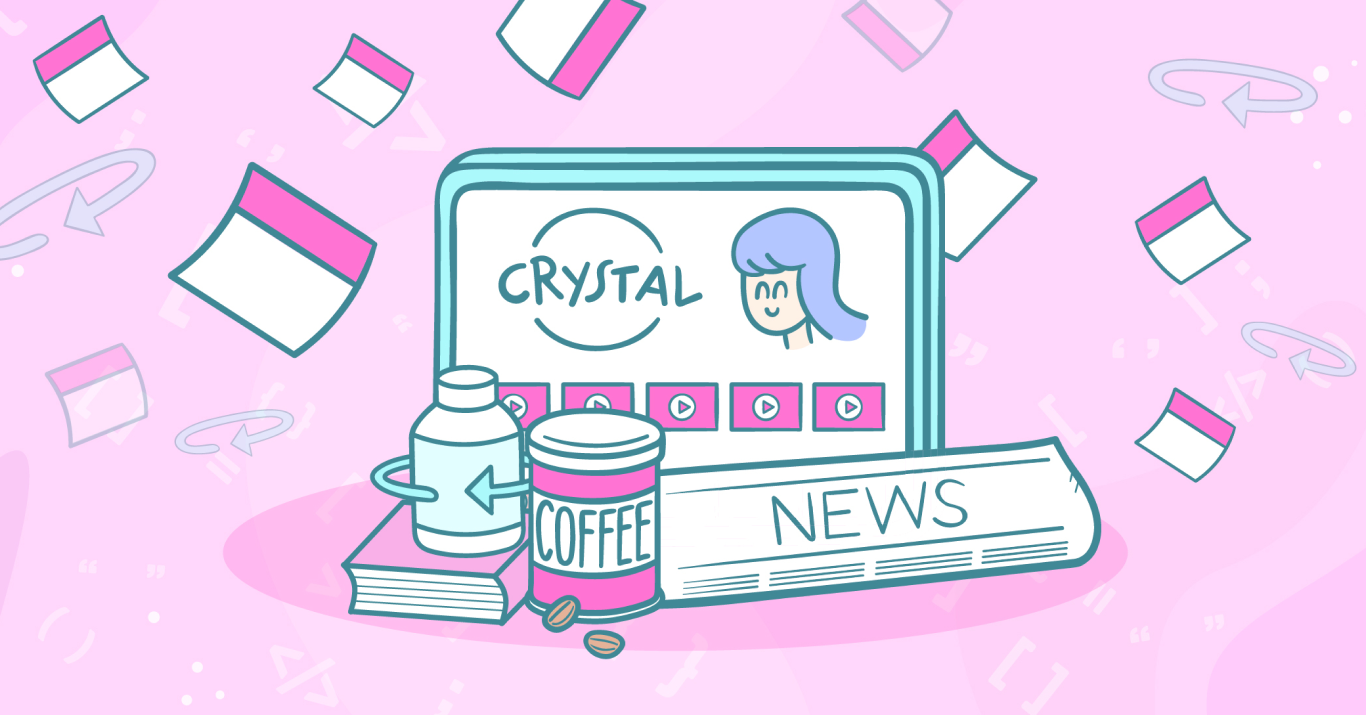Subscriptions (API) Overview
Today, we will explore the Subscription API… how it works, and its benefits and differences from some competitors.

Subscriptions can mean various things in e-commerce, such as recurring payments, plans, tiers, and more. But what exactly does a subscription entail in e-commerce and with Crystallize headless commerce?
Real-World Use Cases
Let's start with some everyday examples:
- Internet Subscription: You pay your internet provider a fixed monthly fee for access to the internet. This is your base price.
- Mobile Phone Subscription: Your network provider charges you a fixed monthly rate for services like calls, data, and SMS. If you exceed your usage limits, you pay for the extra, known as metering.
- API Subscription: As a user of OpenAI’s API, you pay based on your usage without a base price, purely on metered usage.
- Meal Subscription: Food services allow you to subscribe to meal plans. The content of your subscription can change weekly, and the price can be adjusted accordingly.
- Streaming services: Netflix and Spotify, anyone?
The possibilities are vast, and businesses often tailor subscription models to their unique needs. After all, benefits such as recurring revenue, improved customer retention, customer lifetime value, and overall enhanced customer relationships are too good to miss.
Subscription Plans from a Seller’s Perspective
Sellers might offer different subscription models, such as:
- 100GB for $70 a month
- 100GB for $50 a month if you are a students
- 150GB free for 3 months and then $95 a month
- 150Gb for $900 per year
You can already see the confusion, right? The sheer number of possibilities makes it so. Sellers think of subscriptions as products in their catalog, while buyers see them as recurring services that track usage and charges periodically. It is a balancing act between affordability and profitability.
Crystallize Subscription Terminology
Let’s define the wording in Crystallize to help you understand and navigate the Documentation on subscription here.
Subscription Plan
Everything starts with a Subscription Plan, the simplest entity where you set up different period possibilities. Each period can have an optional initial phase and a required recurring phase. Periods can be defined as days, weeks, months, or years.
In addition to the periods, you can add Metered Variables to track usage.
To achieve a monthly and yearly subscription system, you can choose one of these approaches:
- One subscription plan has two periods: monthly and yearly.
- Two Subscription plans with one period each: monthly and yearly.
The choice depends on whether you want to share the metered variable across different plans. In essence, Crystallize lets you build your subscription model to meet your business needs.
Pricing
Once you have a subscription plan, you can create Product Variants associated with one or many subscription plans. For instance, suppose you are a renowned electric car brand offering a self-driving feature. You could sell this feature for a one-time fee or offer it as a subscription service.
You can set this up in Crystallize by creating a subscription plan. Then, you create a new product variant (SKU) to set the one-time fee price and establish a base price for the subscription option.
The base price of a subscription plan is nice, but if you have a scenario where you want usage-based pricing, using Metering variables will let you define the Pricing Tiers of different variables. For example, a base price of $100 plus $5 for every 1GB of bandwidth used.
Metered variables allow you to set pricing tiers at the product variant level with two primary methods:
- Volume-Based: A single price for all units within a tier, reducing the cost per unit only when the volume crosses into the next tier.
- Graduated: Different prices for portions of the total volume, pricing units incrementally as they fall into different tiers.
Let’s explain this with an example. You have three tiers:
- Tier 1: 1-10 units at $10 each
- Tier 2: 11-20 units at $8 each
- Tier 3: 21+ units at $6 each
A volume-based variable would kick in when the condition is that if you buy 15 units, you pay $8 per unit, totaling $120. Conversely, a graduated variable means that if you buy 15 units, you pay 10 units at $10 each ($100) plus five units at $8 each ($40), totaling $140.
The above examples can be integrated consistently in Crystallize, and at each tier, you can manage prices in different currencies and/or markets.
Subscription Contract
Now, let’s discuss what happens after a subscription plan on an SKU is purchased. This is represented by a Subscription Contract, which acts as a real-life contract that locks in the pricing and content of the subscription at the time of purchase. It’s the glue between the Catalog and the customer.
Without a subscription contract, Crystallize is just a product catalog with list prices. The contract holds the prices for a specific customer on a specific subscription plan. You can create a subscription contract with customized pricing, and catalog pricing serves as a rate card.
On top of freezing the Prices for the recurring period and the optional initial period, a Subscription Contract includes the following essential properties:
- Signed Date. The contract start date.
- Renewal Date. The anniversary date is to renew the contract for one period.
- Active Until Date. This contract is active until then. Indeed, you could have paid up to the 28th and canceled on the 15th.
Usage
Do you need to manage usage storage on your own? Not with Crystallize. If the subscription plan attached to the subscription contract includes metered variables, Crystallize lets you track their usage directly in the contract. You can access usage data to compute the total amount a customer must pay upon renewal. The UI also provides current usage visibility.
In simple terms, the contract serves as a pricing reference for a customer to place a future order at an agreed-upon price.
Payment
Payments in Crystallize are handled separately from the subscription itself. Postpaid or prepaid subscriptions can be managed using webhooks and orders.
A typical flow for postpaid subscriptions with metering is:
- Renewal: Crystallize fires an event that triggers a webhook.
- Webhook: The implementation receives the subscription contract and fetches usage data. After calculating the total price, an order is created in Crystallize.
- Order Creation: Another event is fired, triggering a webhook to charge the customer. Payment information can be set on the subscription contract or the customer record.
- Error Management: Use order pipelines to handle cancellations, add-ons, charge retries, etc.
The Subscription API handles everything related to subscription plans and the subscription contracts associating subscription-based products with customers.
Start Today
This overview covers subscriptions with Crystallize. However, you can further customize subscriptions using metadata on a contract or items set up on a phase to make subscriptions editable for buyers, etc.
We can help you set up your subscription. Seriously, we can!
Start by checking our Subscription Commerce Masterclass LIVESTREAM Series. Then, let’s talk about how Crystallize can be a part of your business tech stack.
Set up a personal 1-on-1 Crystallize demo. Let’s discuss your use case and take it from there.
Alternatively, why not SIGN UP for FREE, try Crystallize, and get our team's unparalleled support to help you get going.
🤿Dive Deeper

What's a Subscription Business Model and How Does It Work?
A regular, monthly influx of revenue from faithful customers? Who wouldn’t want to get in on that?! But how do you know if a subscription is the right approach for you?

Subscription eCommerce: The Ultimate Guide
Subscription ecommerce business models have seen fantastic growth in recent years. With Crystallize being at the forefront of it, now is the time to dive into the ins and outs of starting, running, and scaling an eCommerce subscription business.
